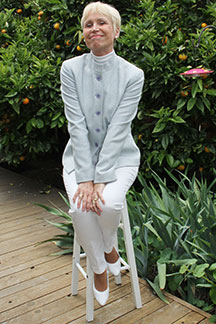Beate Ulbricht – alias Maria Pestunowa – alias Beate Matteoli, was the adopted daughter of Walter Ulbricht, former East German head of state, and his second wife Lotte. Beate was born in 1944 in Leipzig, Germany, under the name of Maria Pestunowa. The Ulbricht’s renamed her Beate and gave the girl their last name. Beate remained the couple’s only child. These facts did not become public knowledge until the Berlin Wall fell. http://www.spiegel.de/spiegel/print/d-31900127.html
In many respects, Beate Ulbricht lived a privileged life. She went to the best schools, enjoyed splendid vacations with her parents and enjoyed many advantages in the socialist state – with one exception. Beate was not allowed to be herself. She was brought up to be the First Child of the Nation. Her parents expected her to be the perfect daughter, the impeccable student, the model pioneer. Her mother told her to always be “useful and cheerful.” Every aspect of Beate’s life was on public display. A slip-up was out of the question. The young girl came to feel trapped in her golden cage, had difficulty coping and finally succumbed to the unrelenting pressure. Shortly before she died in 1991, Beate Ulbricht said in the only interview she ever gave, “Ich hatte zu essen, zu trinken, anzuziehen – aber in diesem goldenen Käfig war keine Liebe – I had food, drink and clothes, but in this golden cage there was no love.” She died a few months later under mysterious circumstances.
The infant Beate Ulbricht
Beate Ulbricht came into the world as Maria Pestunowa, a citizen of the Soviet Union. Her mother was a Ukrainian forced laborer in Germany. The identity of her father remains unknown. Soon after Maria’s birth, her mother perished in a bomb attack. The baby was first placed in an orphanage, then with a foster family in Dresden. In January of 1946, Walter Ulbricht and his partner, Lotte Kuehn, applied to adopt the girl. At the time, Walter was still legally married to Martha Schmellinsky, although the couple had separated years earlier. As his political career was taking off, he planned to wed his personal assistant, Lotte Kuehn, once the divorce was final.
Beate Ulbricht’s adoption
Walter Ulbricht’s political star was on the rise (see last week’s post http://www.walled-in-berlin.com/j-elke-ertle/image-challenged-walter-ulbricht/). Having a family was likely to further his career. Since Lotte was unable to bear children, adoption looked like the perfect option. It all happened quickly. Walter pulled some strings with the youth authorities in Dresden. Although not yet married to Walter, Lotte already identified herself as Lotte Ulbricht. In January of 1946, the youth authorities took baby Maria from her original foster family and placed her with the Ulbrichts. In 1950 the adoption process was finalized though Walter and Lotte Ulbricht did not legally marry until 1953. http://www.spiegel.de/spiegel/print/d-31900127.html
Read about Beate Ulbricht’s tragic adult life at http://www.walled-in-berlin.com/j-elke-ertle/beate-ulbrichts-golden-cage-part-2/.
For a sneak peek at the first 20+ pages of my memoir, Walled-In: A West Berlin Girl’s Journey to Freedom, click “Download a free excerpt” on my home page and feel free to follow my blog about anything German: historic and current events, people, places and food.
Walled-In is my story of growing up in Berlin during the Cold War. Juxtaposing the events that engulfed Berlin during the Berlin Blockade, the Berlin Airlift, the Berlin Wall and Kennedy’s Berlin visit with the struggle against my equally insurmountable parental walls, Walled-In is about freedom vs. conformity, conflict vs. harmony, domination vs. submission, loyalty vs. betrayal.













